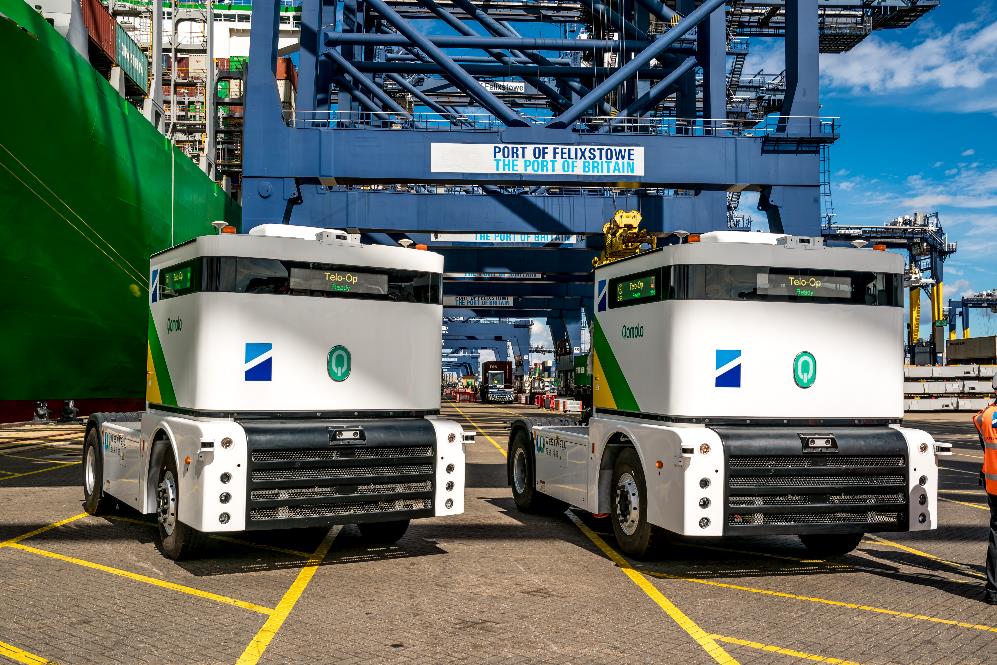Felixstowe deploys first autonomous trucks
14th December 2022

Hutchison Ports Port of Felixstowe is believed to be the first port in Europe to introduce autonomous terminal tractor units (ATs) into mixed traffic container terminal operations. The first two battery-powered units to enter service at the UK’s largest container port have been supplied by manufacturer Westwell.
Commenting on the new equipment, Clemence Cheng, Chief Executive Officer at the Port of Felixstowe, said: “These new autonomous trucks represent a significant technological step forward for the Port of Felixstowe. The tools underpinning port operations have evolved continuously and we already have a range of very advanced systems and equipment in place but this is the first time we will have wholly driverless vehicles.
“Safety is our No.1 priority. This applies equally to technological developments and especially when introducing new equipment into live terminal operations. The ATs have a range of built-in safety features which will allow them to navigate effectively and safely within our container terminals.”
Felixstowe has long record of innovation
The autonomous trucks use a digital map which is loaded to a fleet management system that controls the navigation around the port. The AT then combines that map with its on-board GPS navigation to track its real-time position.
Project Director, and Hutchison Ports UK Chief Information Officer, Karen Poulter explained: “The Port of Felixstowe has a long record of innovation and we are very excited by this latest development at the port. The ATs use LiDAR – a light sensing technology that creates a 3D map of an AT’s surroundings using a laser and receiver, which, when combined with its on-board 360° cameras, provide real-time, all-round ‘vision’. This enables it to ‘see’ everything instantaneously in its vicinity to allow safe and accurate navigation.
“With the support of Extreme Precise Position (EPP) system, it can achieve positioning accuracy of 2cm and a steering angle accuracy of 0.5°.”
The ATs have been through a thorough commissioning and testing programme. They are to be used initially to transport containers between the port’s Trinity and North Rail terminals.

